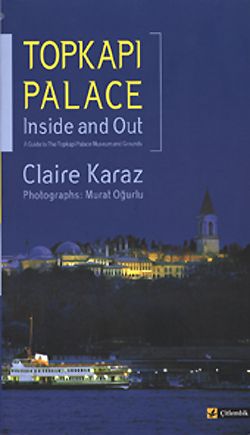Buy or gift a stand-alone digital subscription and get unlimited access to dozens of back issues for just £18.99 / $18.99 a year.
Please register at www.exacteditions.com/digital/cornucopia with your subscriber account number or contact subscriptions@cornucopia.net
Buy a digital subscription Go to the Digital EditionThis perfectly positioned city park, just outside the grounds of Topkapı Palace in the Eminönü district, is the oldest in Istanbul. Its name translated from Turkish means ‘Rosehouse’ Park (gül meaning rose and hane meaning house).
The park is steeped in history, as it once formed the outer gardens of the Topkapı Palace, and the trees mainly date back to the 19th century. During the many years (actually, centuries) of the construction of the Palace’s harem, there was no more room left to build on the Palace’s grounds and so platforms and terraces had to be built over Gülhane Park to create pavilions that gave the illusion that they floated in the air (for more, read Cornucopia 48). Even more significantly, the reforms of the Tanzimât, a period of reformation that set about modernising the Ottoman Empire which began in 1839 and ended with the First Constitutional Era in 1876, were first proclaimed in Gülhane Park, with Sultan Abdülmecid shortly after issuing a statute called the ‘Hatt-ı Şerif (the Imperial Edict) of Gülhane’.
The park was opened to the public in 1912. A while later, a small zoo was opened, and the first statue of Atatürk to be erected in Turkey (sculpted by Heinrich Krippel) appeared in the grounds in 1926. In recent years, the park has undergone a transformation – the zoo, funfair and picnic grounds were removed to create more open space. In 2008, a Museum of the History of Science and Technology was opened featuring 140 replicas of inventions from the 8th to the 16th centuries from a multitude of spheres including astronomy, geography, medicine, architecture, physics, and warfare.
The park has three entrances, with the south entrance, below the Archaeological Museum, serving as one of the main gates to Topkapı Palace. If you go by tram, the discreet, recently opened café beside the Gülhane tram stop provides a new entrance to the park saving a complicated walk dodging trams and traffic round the outside of the walls. A delightful tea garden at the far end of the park, close to the third, ‘Sarayburnu’ (Palace Point) entrance (the easiest if you arrive by taxi) provides wonderful views across the Bosphorus to the Asian shore.
Most of the sultans’ privy chambers and pavilions in the Topkapı Harem are closed to the public and will remain so until ways can be found to exhibit them sensitively – no mean feat given the fragility of the murals, the gilded fretwork, and the rush flooring that once protected precious carpets from damp and friction.
Cornucopia was allowed to tiptoe through two of the privy chambers at the palace built by sultans for themselves and their families rather than for public show. Filling out the picture of how life was lived in this inner sanctum, the palace museum organised an exhibition this summer (2012) of some 300 related objects, entitled Harem: The House of the Sultan. The book of the exhibition contains useful essays on the history of the Harem, and how it was built and added to, layer upon layer, over the centuries, until they ran out of room and had to build huge platforms and terraces out over Gülhane Park, literally creating pavilions in the air.




 Issue 66, December 2023
Turkey’s Centenary Issue
Issue 66, December 2023
Turkey’s Centenary Issue

Bezmärä Ensemble

Cornucopia works in partnership with the digital publishing platform Exact Editions to offer individual and institutional subscribers unlimited access to a searchable archive of fascinating back issues and every newly published issue. The digital edition of Cornucopia is available cross-platform on web, iOS and Android and offers a comprehensive search function, allowing the title’s cultural content to be delved into at the touch of a button.
Digital Subscription: £18.99 / $18.99 (1 year)
Subscribe now